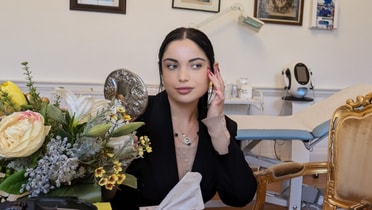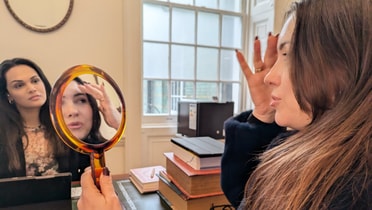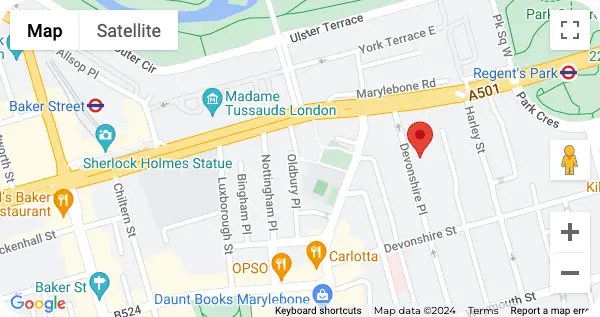Condition: Varicose Veins
Varicose Veins symptoms
& causes

Dermatological
Non-surgical
Surgical
Body Concerns
Health & Wellness
Skin & Face
Expert care for a wide range of skin conditions, ensuring healthy, radiant skin.
Lesions & Bumps
Comprehensive care for skin lesions and bumps, promoting clear and healthy skin.
Lifting & Tightening
Advanced treatments to lift and lighten the skin, enhancing firmness and brightness.
Rejuvenation
Revitalize your skin with advanced treatments designed to restore a youthful glow.
Skin Treatments
Effective solutions for a variety of skin concerns, promoting clear and healthy skin.
Wellness
Holistic skincare approaches to support overall skin health and well-being.
Advanced, non-invasive treatments to rejuvenate your appearance without surgery.
Body Treatments
Transformative, non-invasive treatments to sculpt and tone your body effortlessly.
Facial Treatments
Rejuvenating facial treatments to refresh and enhance your natural radiance.
Hair Treatments
Advanced treatments to restore hair vitality and promote healthy growth.
Injectables
Minimally invasive injectables to smooth wrinkles and enhance facial contours.
Precision cosmetic surgery tailored to enhance and refine your natural beauty.
Body Surgery
Expertly performed body surgeries to reshape, contour, and enhance your physique.
Breast Surgery
Specialized breast surgeries to enhance shape, size, and symmetry for a natural look.
Cosmetic Andrology
Advanced procedures designed to enhance male aesthetics and address intimate concerns.
Cosmetic Gynaecology
Tailored surgical solutions to enhance feminine aesthetics and improve intimate well-being.
Facial Surgery
Precision facial surgeries to refine features and achieve natural, balanced results.
Fat Transfer/Removal
Advanced fat transfer and removal techniques to sculpt and enhance your body’s contours.
Comprehensive solutions to address a range of body concerns, from stubborn fat to skin laxity.
Breasts
Tailored solutions for breast concerns, including size, shape, and symmetry.
Other Areas
Targeted solutions for stubborn areas of the body, tailored to your unique needs.
Volume & Contouring
Specialized treatments to enhance body volume and improve overall contour for a balanced silhouette.
Holistic care focused on improving overall health and well-being for a balanced lifestyle.
Digestive Health
Comprehensive care to support digestive health and improve overall well-being.
Energy & Immunity
Holistic approaches to boost energy levels and strengthen your immune system for optimal health.
General Health
Personalized strategies to maintain and enhance your overall health and vitality.
Expert care for a wide variety of skin and facial concerns, promoting a healthy, glowing complexion.
Ageing Signs
Expert treatments to minimize ageing signs, rejuvenating your skin for a youthful glow.
Skin Texture & Tone
Advanced treatments to improve skin texture and even out tone for a smoother, radiant complexion.
Specific Areas
Targeted treatments to address skin concerns in specific facial areas for balanced, refined results.
Volume & Contouring
Tailored solutions to restore facial volume and enhance natural contours for a more youthful appearance.

What are varicose veins?
Varicose veins are swollen and twisted veins that you can often see just beneath the skin. They usually show up on the legs and can appear bluish or dark purple. These veins occur when valves inside them malfunction, so blood flows in the wrong direction and pools in the vein.
This accumulation causes the veins to stretch, swell and sometimes hurt. Compared with people’s legs without varicose veins, people with varicose veins may complain of heaviness, throbbing or tiredness, particularly after prolonged periods of standing. Although they are not usually a serious health concern, most people opt to treat varicose veins to relieve discomfort or improve the appearance of their legs. The treatments can be simple and often alleviate pain and improve confidence.
Types of varicose veins
If you have varicose vein disease and have persistent pain, swelling or skin changes, such as darkening, it is a good idea to see a doctor to properly diagnose varicose veins. You should also get medical help if you develop ulcers or sores that aren’t healing, if your veins begin to bleed or if you’re having difficulty moving your legs. The sooner you can begin varicose vein treatment, the better. More serious complications may occur, so it’s a good idea to get examined, even if symptoms feel mild.
Varicose veins develop when the valves in your veins are weak or damaged. Typically, veins return blood to the heart. But the veins in your legs have to work against gravity to accomplish this, which can be challenging.
Here’s how it works:
If these valves are not functioning well, blood can begin to pool and flow backward, resulting in the veins stretching or twisting. This leads to varicose veins.
Some people are more prone to varicose veins than others. Here are the reasons:
Family history: You might develop varicose veins if other people in your family have them.
Being overweight: Extra pounds puts additional strain on your leg veins.
Getting older: As you grow older, the valves in your veins can become weaker which makes it more difficult for blood to travel in the correct direction.
Being a woman: Hormonal fluctuations coming from periods, pregnancy or menopause can influence your veins. If someone is on birth control pills, that can also be a factor.
Pregnancy: Your body produces more blood to nourish your baby, and this can also stretch your leg veins.
Not moving enough: Spending too much time in a seated or standing position can impact blood circulation, which in turn can lead to varicose veins.
The legs may swell from long-term varicose veins.
It causes painful sores around the ankles that start as a dark patch on the skin.
Rarely, a vein near the skin’s surface may break and bleed slightly.
If a deep vein becomes swollen and painful or swollen, that could indicate a clot.
A potentially dangerous condition that occurs when a blood clot forms in a deep vein, most often in the legs.
This condition usually occurs in the arms or legs, with inflammation, pain, redness and swelling.
Common conditions such as varicose veins may lead to chronic venous insufficiency when the veins in the legs are damaged, these veins aren’t able to regulate blood flow as effectively as they should.
It is good to get your legs moving to keep the blood flowing. Common activities such as walking, gently stretching, or even standing up from time to time, can help to relieve some of the pressure on the veins, and promote their health.
What happens if you don’t move enough?
Blood can pool in your veins if you are sitting or standing too long. Over time, this may result in varicose veins. Do try to get up at least every hour, if only for a few minutes.
Carrying excess weight adds stress to your leg veins and makes it more difficult for blood to return to the heart. Being at a normal weight can help keep your veins healthy.
Small steps to get rid of extra weight
You don’t need a strict diet. Start walking each day, drinking more water, and eating healthy with fruits, vegetables and less sugar. Even slight adjustments can add up to be significant.
Yes. Compression stockings put light pressure on your legs and allow your veins to push blood upward. They are great if you are on your feet or seated a lot during the day.
When should you wear them?
Wear them during the morning or while working. They’re designed in various sizes and styles, so ask your doctor which may work best for you.
Elevating your legs above your heart facilitates better venous return and gives your veins a rest. It can also lessen swelling and fatigue in your legs.
How often should you do it?
Try to elevate your legs for 15 to 20 minutes, two to three times a day. Just use a pillow, or lie down with your feet up, it’s uncomplicated, and soothing.
Tight clothing can constrict your waist or legs and prevent blood from flowing properly. It can create more pressure in your veins and can lead to varicose veins.
What clothes are better to wear?
Wear loose, comfortable clothing especially around your abdomen and thighs. They allow your blood to circulate freely while still allowing you to feel good and look nice.











David Perkins
Saw Dr Omar who was great, friendly and professional.
Gillian And Bill McLeod
Wonderful consultation with Lesley!

Yasmin Juma
Very good service
Frida Carlow
Great treatment! Very helpful receptionist!
Mariana O.
The best clinic !

Prabs Rai
Painless and very reassuring

Robin Saxen
Very welcoming and informative.
Judith Durham
Very helpfull and amazing expirence

Ivelina Mileva
Fast, professional service with excellent quality!
Sarah Conners
Very professional and excellent care. Lovely premises.
59,645
Happy patients served.
Need to reach us?
Contact or visit our clinic.
We're based in central London at the historic 14 Devonshire Pl which is only a short 2 minute walk from Regents Park tube station a 10 minute taxi journey to Kings Cross, and St Pancras stations.
We're open Monday - Friday 8am - 8pm, and Saturdays 9am - 5pm, feel free to drop in to talk to a member of our team where they can answer any of your questions.
Alternatively book a free consultation, request a callback, or call us on 0207 4364441.
